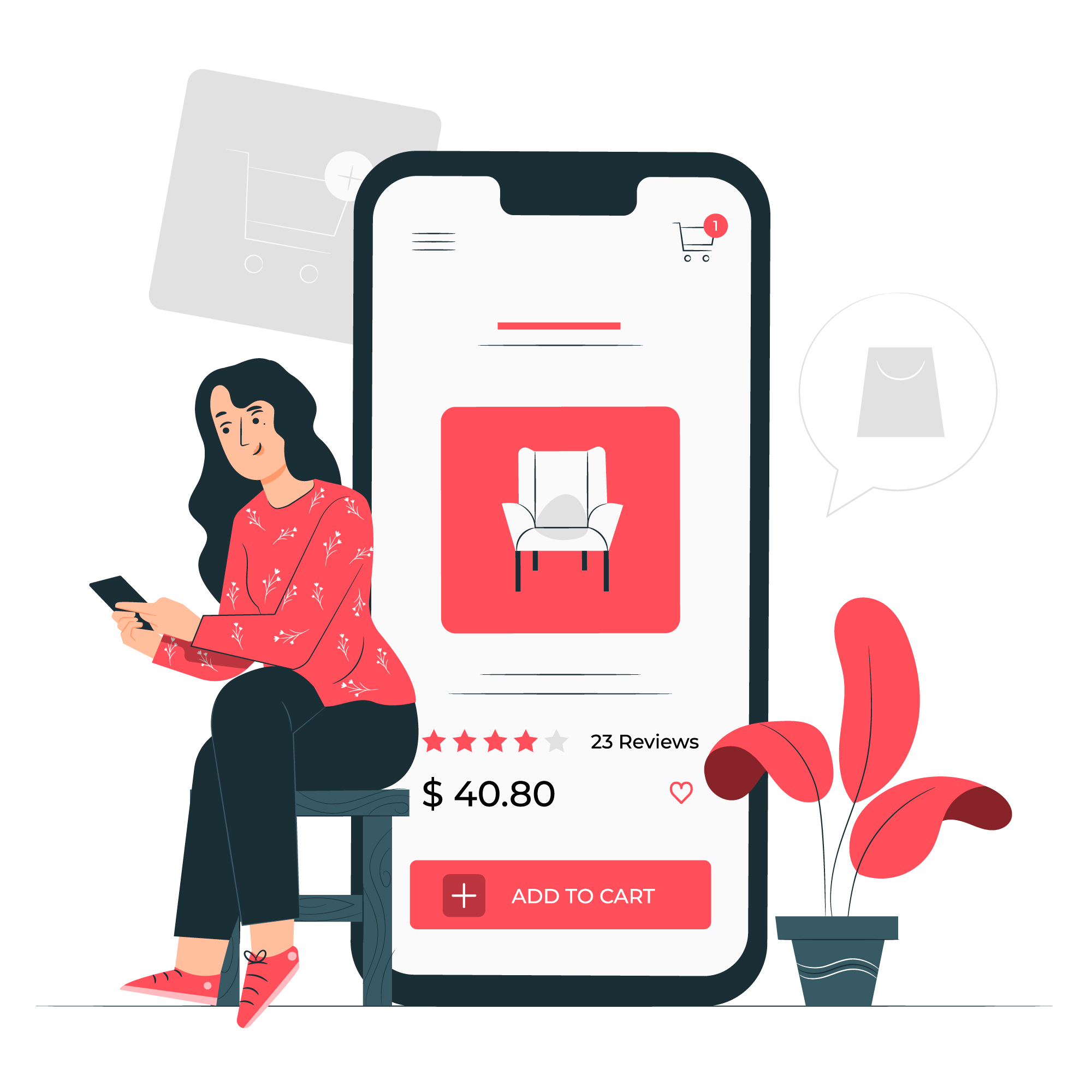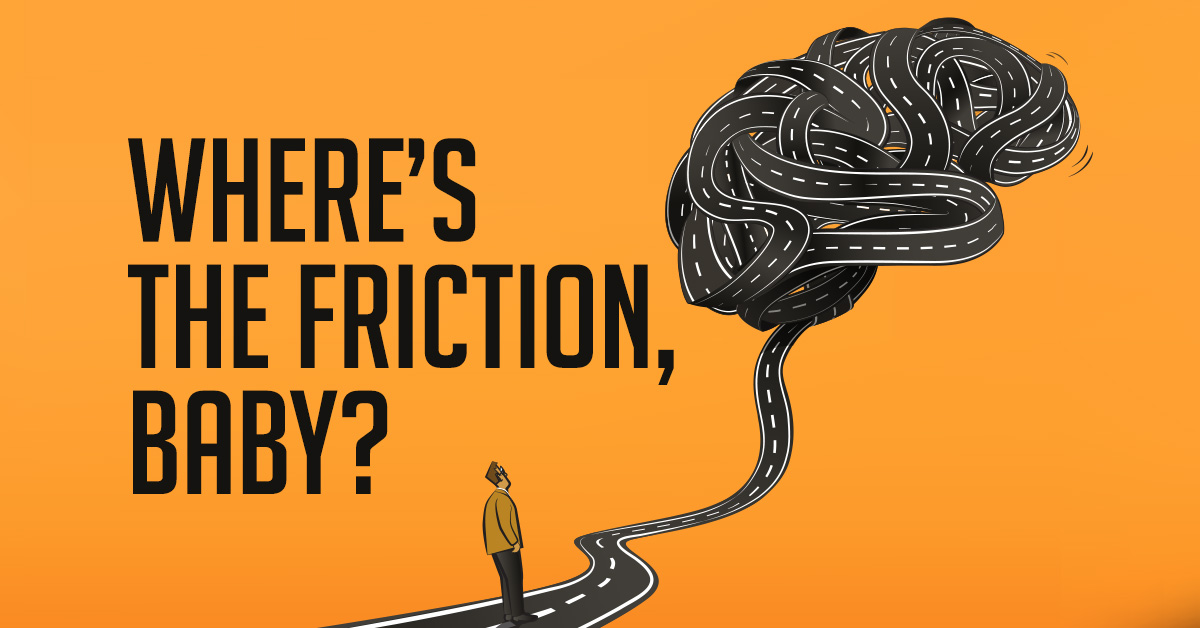Somewhat recently, I spoke at an invite-only Summit with a group of brands and businesses, such as Mud/Wtr, Ritual, Beekeeper’s Naturals, Orgain, Golden Hippo, representatives from flavoring houses, contract manufacturers, and even people from places like Nestle…🎤
So needless to say it was a very eclectic group, and I had a blast sharing insights about market research and storytelling.😊
Anyways, one of my fellow speakers at the event was Loran Nordgren…
Who is the author of a book called The Human Element.
I’m a huge fan of this book: I’d recommend anyone who is interested in marketing, psychology, conversions, influence, or persuasion to check it out…👌
And the major theme of The Human Element is how to identify and remove the frictions that arise when we’re presenting people with new ideas, products, services, or innovations.
For example, one of the first case studies in the book is about an eComm retailer selling highly customizable sofas.
 Loran refers to them as Beach House (not their real name), and they were encountering a huge problem:
Loran refers to them as Beach House (not their real name), and they were encountering a huge problem:
Prospective customers would spend hours on Beach House’s website customizing their sofas…
Click through to the checkout page…
Enter their information…
And then not complete their purchase.
Beach House couldn’t figure out why.
Was it the price? Did people just like browsing but they had no true buyer intent? Was something on their checkout page screwed up?
Turns out, the reason for their extremely high “abandon rate” wasn’t any of those things…
Instead, once Loran started talking to Beach House’s customers…
It became clear that the #1 reason prospective customers weren’t completing their purchase was because they didn’t know what to do with their old sofa.
That was it.
Seems kind of funny, but makes sense.
These folks were about to hit “order” and then a friction set in.
“Will I need to hire a mover? Can I just leave my old couch outside for trash people to collect it? Should I donate it and if so, to where?”
These questions and this uncertainty was enough to kill the sale…
So Beach House changed their offer to include free removal of customers’ old sofas…
And conversions skyrocketed by an insane amount.
This is an example of identifying and removing friction…
But it’s ridiculously applicable to everything we do in eComm, copywriting, sales, and direct response.
For example…
One time on Instagram, I had some “verified” dude leave a comment on one of my posts saying “DM me, I have a proposal for you.”
And I instantly rolled my eyes.
Actually I rolled my eyes and then I responded:
“I’m not going to DM you for a random proposal I have no context to. This is also just a garbage approach because you’re creating an extra step for anyone you’re trying to pitch.”
 Harsh, but this guy’s got 750k followers and it’s obviously part of his sales process, so I don’t regret that comment…
Harsh, but this guy’s got 750k followers and it’s obviously part of his sales process, so I don’t regret that comment…
And anyways the point is: that “extra step” = friction.
You want to pitch me something…
But instead of just doing it, you’re asking me to take the first step.
Why am I going to do that?
Why would I go out of my way, committing even a few extra seconds, just to have someone pitch me something that I’m almost certainly not interested in?
So in this case here, simply DMing me would be a step towards removing friction.
And meanwhile, let’s talk about sales copy specifically.
Have you noticed how in lots of VSLs and TSLs, after the first call to action there will be a section explaining what will happen next?
“You’ll then be taken to our secure checkout page where you’ll enter your order information and complete your order. After that, our team will get to work in the warehouse and you’ll receive your order in the next 3-5 business days. You’ll also get a confirmation email within 15 minutes of finishing your order with all of our contact information in case you’ve got any questions.”
Stuff like that?
You know why that works?
It removes friction.
It makes the checkout process less of an “unknown”…
And it answers the fears and worries a prospective “cold” customer has about buying from your unknown company.
There are frictions everywhere…
And what’s really cool is that removing friction is often faster, cheaper, and more effective than trying to throw money at a problem to solve it.
You see, Loran distinguishes between Friction and Fuel.
Fuel is where we’re trying to pour resources into a problem. Spending more money on ads. Hiring more people. Things like that. Those things are valuable and important…
But they can also be costly and time-consuming.
Meanwhile, identifying and removing frictions can often cost zero money and be done in a matter of seconds.
Pretty cool, right?
– SPG
P.S. This post originally came from an email I sent to my private list. If you want to see more stuff like this from me, you can apply to join my list using this link

0 Comments